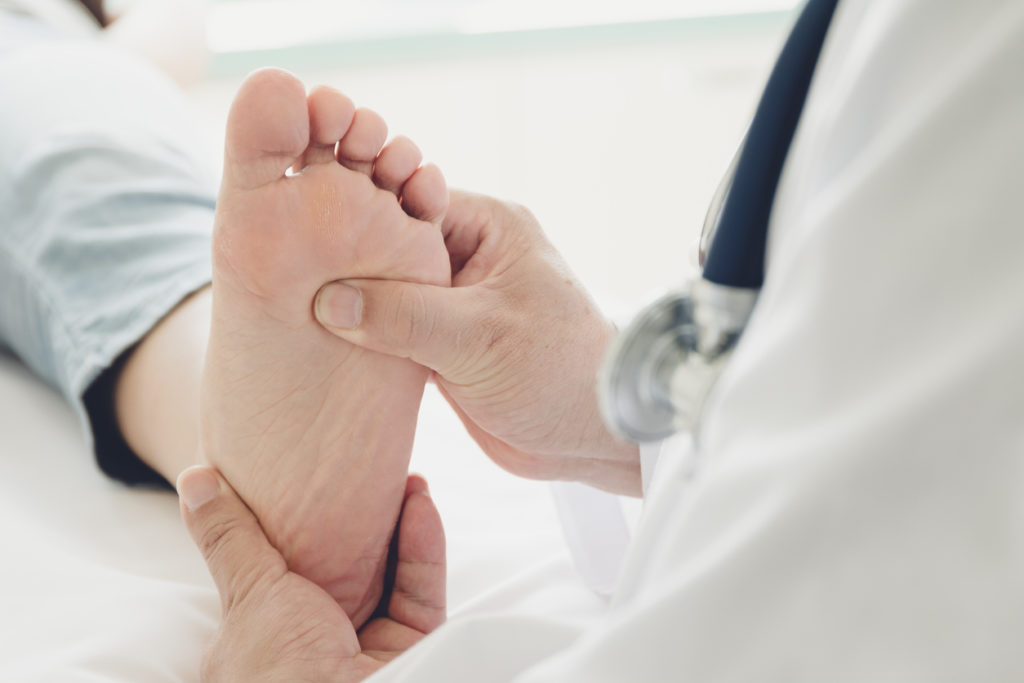Rationale: Diagnostic procedures may improve a doctor’s ability to predict the recurrence of testicular cancer.Purpose: Diagnostic trial to detect the risk of recurrent disease in patients who have stage I testicular cancer and who have undergone orchiectomy within the previous 12 weeks.
Official Title
Correlation of Histopathology, Immunohistochemistry and Quantitative Radiology With Outcome in Early Stage Nonseminomatous Germ Cell Tumor.
Conditions
- Testicular Germ Cell Tumour
Study Type
Interventional
Study Design
Diagnostic.
Further Details
Use histopathological and immunohistological analysis of the primary testis tumor along with quantitative radiographic assessment to identify a subset of patients with clinical stage I nonseminomatous germ cell tumor of the testis who have a very low risk of metastasis.
Compare these findings with other predictive models of risk of metastasis after orchiectomy in this group of patients.
Outline:
- Patients undergo primary retroperitoneal lymph node dissection (RPLND) or active surveillance as management of their disease. The choice of treatment is determined by the physician and the patient. Patients with pathologically positive resected lymph nodes may undergo treatment (observation or adjuvant chemotherapy) at investigator’s discretion.
- All patients are tested by quantitative radiology and blood markers (HCG and AFP) at baseline and then at various times after surgery to identify pathologic stage II disease. The timing of these studies depends on the stage of disease and/or type of disease management.
- Patients who undergo RPLND, have stage I or II disease, and do not receive adjuvant therapy (radiation or chemotherapy) are followed monthly during year 1, every 2 months during year 2, every 6 months during years 3-5, and annually thereafter.
- Patients who undergo RPLND, have stage II disease, and receive adjuvant therapy are followed every 2 months during year 1, every 4 months during year 2, every 6 months during years 3-5, and annually thereafter.
- Patients who do not undergo RPLND are followed monthly during year 1, every other month during year 2, every 6 months during years 3-5, and annually thereafter.
Study Start
May 1999
Eligibility & Criteria
- Ages Eligible for Study: 15 years and older
- Genders Eligible for Study: Male
- Accepts Healthy Volunteers: No
Clinical stage I nonseminomatous germ cell tumour of the testis:
Must have had a radical inguinal orchiectomy with or without retroperitoneal lymph node dissection within prior 12 weeks
AFP and HCG normal or decreasing after orchiectomy at a rate consistent with known half lives
Pathology blocks and radiologic studies available
No metastatic disease on physical exam or chest or abdominal/pelvic CT
No pure seminoma (unless associated with elevated AFP at diagnosis)
Patient Characteristics
Age:
- 15 and over
Performance status:
- Not specified
Life expectancy:
- Not specified
Hematopoietic:
- Not specified
Hepatic:
- Not specified
Renal:
- Not specified
Other:
- No prior malignancy including prior primary testicular cancer
Prior Concurrent Therapy
Biologic therapy:
- Not specified
No prior chemotherapy Endocrine therapy:
- Not specified
Radiotherapy:
- Not specified
Surgery:
- See Disease Characteristics
Total Enrolment
315
Contact Details
Richard S. Foster, MD
Indiana University Melvin and Bren Simon Cancer Center
Location:
Robert H. Lurie Comprehensive Cancer Center at Northwestern University
Chicago, Illinois
United States, 60611
All content and media on the HealthEngine Blog is created and published online for informational purposes only. It is not intended to be a substitute for professional medical advice and should not be relied on as health or personal advice. Always seek the guidance of your doctor or other qualified health professional with any questions you may have regarding your health or a medical condition. Never disregard the advice of a medical professional, or delay in seeking it because of something you have read on this Website. If you think you may have a medical emergency, call your doctor, go to the nearest hospital emergency department, or call the emergency services immediately.







